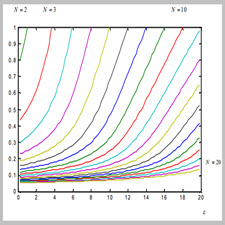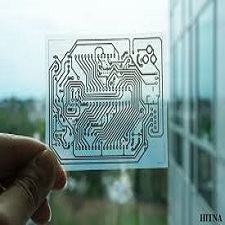توضیحات
ABSTRACT
Loss minimization in distribution networks has considered as great significance recently since the trend to the distribution generation will require the most efficient operating scenario for economic viability variations. urthermore, voltage instability phenomena can occur in distribution systems and caused a major blackout in the network. The decline of voltage stability level will restrict the increase of load served by distribution companies. To control distribution networks, it can be used from Distributed Generation (DG). DG is increasingly drawing great attention and development of DGs will bring new chances to traditional distribution systems. However, Installation of DG in non-optimal places can result in an increasing in system losses, voltage problems, etc. This paper presents two scenarios for distributed generation placement in a distributions system. In the first scenario only minimizing the total real power losses in the system is considered. Both the optimal size and location are obtained as outputs from the exact loss formula. The next scenario considered the voltage stability index (SI) to find optimum placement. In these scenarios Different DG placements are compared in terms of power loss , loadability and voltage stability index. To improve power transfer capacity, two line stability indices have been introduced. Distribution power flow solution algorithm is based on the equivalent current injection that uses the bus-injection to branchcurrent (BIBC) and branch-current to bus-voltage (BCBV) matrices. These scenarios are executed on typical 33 and 30 bus test system and yields efficiency in improvement of voltage profile and reduction of power losses; it also may permit an increase in power transfer capacity, maximum loading, and voltage stability margin.
INTRODUCTION
Distributed generation (DG) is associated with the use of small generation units located close to or in the load centers. DG can be implemented either by end user, by project developer, or by distribution utilities. Final consumers get an alternative supply for peak consumption or a back up option. Project developers have a business opportunity in the energy market. Distribution utilities see it as an interesting option to reduce losses, to deal with the high cost of not supplied energy, or to avoid or delay network expansion. The problem of DG allocation and sizing is of great importance. Studies have indicated that inappropriate selection of location and size of DG, may lead to greater system losses than the losses without DG.
چکیده
به حداقل رساندن زیان در شبکه های توزیع به تازگی از اهمیت زیادی برخوردار بوده است، زیرا روند تولید توزیع به کارآیی ترین عامل برای تغییرات اقتصادی پایداری نیاز دارد. علاوه بر این، پدیده بی ثباتی ولتاژ می تواند در سیستم های توزیع رخ دهد و موجب خاموش شدن شبکه در شبکه می شود. کاهش سطح ثبات ولتاژ، افزایش بار مصرف شده توسط شرکت های توزیع را محدود می کند. برای کنترل شبکه های توزیع می توان از نسل توزیع شده (DG) استفاده کرد. DG به طور فزاینده توجه زیادی را جلب کرده و توسعه DG ها فرصت های جدیدی را برای سیستم های توزیع سنتی به ارمغان می آورد. با این وجود، نصب DG در مکان های غیر مطلوب می تواند موجب افزایش زیان سیستم، مشکلات ولتاژ و غیره شود. این مقاله دو سناریو برای قرار دادن توزیع تولید را در یک سیستم توزیع ارائه می دهد. در سناریو اول تنها به حداقل رساندن کل تلفات واقعی واقعی در سیستم در نظر گرفته شده است. هر دو اندازه و مکان بهینه به عنوان خروجی از فرمول دقیق از دست دادن به دست می آیند. سناریو بعدی، شاخص ثبات ولتاژ (SI) را برای یافتن جایگذاری مطلوب در نظر گرفت. در این شرایط، قرار دادن DG مختلف با توجه به کاهش قدرت، بارگذاری و شاخص پایداری ولتاژ مقایسه می شود. برای بهبود ظرفیت انتقال قدرت، دو شاخص ثبات خط ارائه شده است. الگوریتم راه حل جریان برق توزیع مبتنی بر تزریق فعلی معکوس است که از ماتریس های تزریق اتوبوس به جریان شعاعی (BIBC) و شاخه جریان به ولتاژ اتوبوس (BCBV) استفاده می شود. این سناریوها بر اساس 33 و 30 تست سیستم اتوبوس معمولی اجرا می شود و کارایی را در بهبود مشخصات ولتاژ و کاهش تلفات قدرت می دهد. همچنین ممکن است باعث افزایش ظرفیت انتقال قدرت، حداکثر بارگیری و حاشیه پایداری ولتاژ شود.
مقدمه
نسل توزیع شده (DG) با استفاده از واحدهای تولیدی کوچک واقع در نزدیکی یا در مراکز بار همراه است. DG می تواند توسط کاربر نهایی، توسط توسعهدهنده پروژه، یا توسط توزیع آب و برق انجام شود. مصرف کنندگان نهایی یک منبع جایگزین برای مصرف پیک یا گزینه ی پشتیبان می گیرند. توسعه دهندگان پروژه فرصت کسب و کار در بازار انرژی دارند. Utilities توزیع آن را به عنوان یک گزینه جالب برای کاهش تلفات، برای مقابله با هزینه های بالای انرژی عرضه نمی کند، یا برای جلوگیری یا به تأخیر انداختن گسترش شبکه. مشکل تخصیص و تعیین اندازه DG از اهمیت زیادی برخوردار است. مطالعات نشان داده اند که انتخاب نامناسب محل و اندازه DG، ممکن است منجر به زیان سیستم بیشتر از تلفات بدون DG شود.
Year: 2010
Publisher : Eighteenth International Energy Conference of Iran
By : A. Parizad , A. Khazali , M. Kalantar
File Information: English Language/ 6 Page / size: 1.04 MB
سال :1389
ناشر : هجدهمین کنفرانس بین المللی برق ایران
کاری از : A. Parizad، A. Khazali، M. Kalantar
اطلاعات فایل : زبان انگلیسی / 6 صفحه / حجم : MB 1.04


![Optimal Placement of Distributed.[taliem.ir]](https://taliem.ir/wp-content/uploads/Optimal-Placement-of-Distributed.taliem.ir_.jpg)





![9Round Attack on AES-256 .[taliem.ir]](https://taliem.ir/wp-content/uploads/9Round-Attack-on-AES-256-.taliem.ir_-150x150.jpg)
نقد و بررسیها
هنوز بررسیای ثبت نشده است.